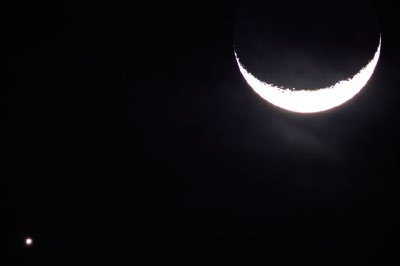Living in Central California, we get used to the bright sun
rising in the sky every day. We do notice that the sun will rise
somewhat higher during the summer months, and bring us warmer days,
due to the fact that it’s shining on our northern hemisphere.
Living in Central California, we get used to the bright sun rising in the sky every day. We do notice that the sun will rise somewhat higher during the summer months, and bring us warmer days, due to the fact that it’s shining on our northern hemisphere. And in the same manor, during the winter months, the sun will rise lower in the sky at its maximum, due to the concentration of its rays in the southern hemisphere.
That is all good and well, but what if you find yourself farther north – say Yakutat, Ala.? Seven friends and I just came back from the cold that engulfs this little town in our most northern state this time of the year.
There we enjoyed the most bountiful fishing in the world on the Akwe River and we all got hungry. As we were getting ready to go back to our cabin for something to eat, Steve, my astronomy friend, pointed to the sun and we realized that at high noon, the sun is barely a hands length up from the horizon. At home it would be more like triple that length.
That discussion brought me back to 1964 (whether Steve wanted to hear it or not), when in the U.S. Air Force, I was transferred to Thule, Greenland – only 700 miles from the North Pole. When we landed, it was 3 a.m. and 29 degrees. But I noticed it was as bright out as day. Even though I was warned that the sun would greet me when I landed, it was still a shock. And the sun never did go down that day. In fact, it took another month before the sun went down.
By August, the days were more like back home, 12 hour days and 12 hour nights. I started to notice the days got shorter and shorter, and the nights kept getting longer and longer, until one day the sun went down and didn’t come back for three months.
The thing at that time was the “big bet.” I wasn’t sure what everyone was talking about: the “big bet.” Later I found out that they were all betting on the day and time the sun would show up again. They actually do the same thing when the sun goes down for the last time. In fact, being in Greenland, you got to the point where you would bet on anything, just to keep sane.
Now, back to the river Akwe. One evening, as we watched the sun set, we noticed the quarter moon rising up. Even the non-astronomers appreciated the views. And as the moon rose, following the sun’s path above the trees, the sight would change depending on the mist and fog present at the time. My nephew Jerry spent the whole night next to the river watching the moon. As an amateur astronomer, I always appreciate when someone admires the views the skies provide.
To sum up our fishing trip, we all had a great time, caught a lot of fish and are counting the days for our next return. Just have to see that view of the moon again.
Constellation of the Month
The princess Andromeda seems to have become chained to the horse, Pegasus. She is a line of three stars, about as bright as the ones in the square of Pegasus. One of them is the upper left corner star of the square. The ancient people thought of it as belonging to both constellations. It has now been decided that it belongs to Andromeda, not Pegasus, which rather spoils the square.
Go from this corner star along the line of Andromeda, past a dimmer star, to the middle star in Andromeda’s line. This star has the name Mirak. You are now looking at the “zenith” or part of the sky directly overhead; you will have to be lying on your back. Turn right a Mirak. Your eye is moving along a shorter and more crooked line of fainter stars. The third of these little stars is fuzzy, if you look careful. But, it’s not a star at all – it is the Great Galaxy in Andromeda.
Everything else you can see in the sky is inside our own Milky Way Galaxy. Only this fuzzy galaxy is outside. It is another galaxy, consisting of billions of stars. It is the most distant thing you will ever see with your naked eyes: two million light years away. So that faint light you see coming from that galaxy left that area more than two million years ago traveling at a speed of 184,000 miles per second.
Make sure you get out in your back yard on the night of the 17th, and morning of the 18th, for the viewing of the Leonid meteor showers. We could have an hourly rate of as high as 200.
Clear skies.













